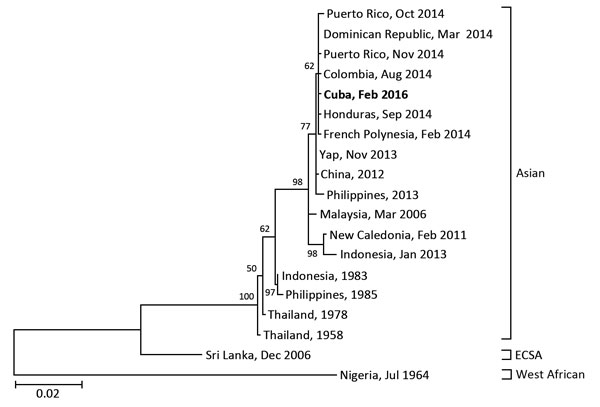Volume 22, Number 9—September 2016
Letter
Autochthonous Chikungunya Fever in Traveler Returning to Japan from Cuba
Figure

Figure. Phylogenetic analysis of the chikungunya virus sequence obtained from a patient returning to Japan (in bold) from Cuba in February 2016, compared with reference sequences. Virus lineages are shown at right. Scale bar represents substitutions per nucleotide position. ECSA, Eastern/Central/South African lineage.
Page created: August 24, 2018
Page updated: August 24, 2018
Page reviewed: August 24, 2018
The conclusions, findings, and opinions expressed by authors contributing to this journal do not necessarily reflect the official position of the U.S. Department of Health and Human Services, the Public Health Service, the Centers for Disease Control and Prevention, or the authors' affiliated institutions. Use of trade names is for identification only and does not imply endorsement by any of the groups named above.